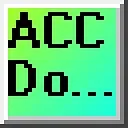0:04
the PLC simulator is a valuable tool for
0:07
testing and troubleshooting sequential
0:08
function chart sfc programs within the
0:11
xg5000 programming software it enables
0:15
users to simulate the functionality of a
0:17
progam logic controller LS electric PLC
0:20
without needing any physical
0:22
Hardware this feature makes it an
0:24
excellent resource for both novices and
0:26
seasoned programmers furthermore the
0:29
xg500 programming software is free
0:31
allowing you to verify your logic before
0:33
investing in the hardware in this
0:36
session we will be leveraging the PLC
0:38
simulator within the xg5000 programming
0:40
software to explore sequential function
0:43
sfc the graphical step and transition
0:46
view significantly ease the
0:47
troubleshooting process for sfc
0:50
programs although sfc programming is
0:52
frequently underappreciated it stands
0:54
out as an effective method for program
0:57
development this approach allows you to
0:59
translate your program prog sequence of
1:00
operations directly into the PLC this is
1:03
step three of five in the program
1:06
process the simulation monitoring
1:08
screens will Aid you in visualizing and
1:10
refining your logical sequence of
1:11
operations concentrating on one step of
1:13
your logic at a time during this session
1:16
we will demonstrate how to simulate the
1:18
start stop circuit we previously
1:20
developed in the xg5000 programming
1:22
software before translating into the
1:28
started detailed information inform
1:30
contained in this video can be found at
1:48
software open the xg5000 programming
1:51
software on your computer once the
1:54
software runs we can open the start stop
1:56
sequential function chart project we
2:01
select the open project icon on the main
2:03
screen or select main menu project open
2:06
project alternatively you can use the
2:12
o the default directory is located under
2:14
C colum back/ xg5000 back/ Projects
2:19
please select the project we created
2:22
open our sequential function chart
2:24
diagram will now be displayed double
2:27
click on the sample sfc program under
2:29
the scan and program window in Project
2:31
window this will call up our sfc program
2:35
we are offline to the controller due to
2:37
the blue bar at the bottom of the xg5000
2:42
window start the PLC simulator and
2:48
program select this PLC simulator by
2:50
selecting the icon on the main screen
2:53
this can also be started by the main
2:58
Simulator the xg6 window will first be
3:02
displayed then the xg5000 will be shown
3:04
with communication to the simulator this
3:06
is the red bar at the bottom of the
3:12
software the right to PLC window will
3:15
automatically be displayed xg5000
3:18
software treats the simulator like a PLC
3:20
controller and you must first establish
3:22
communication and transfer the
3:24
program we will leave all of the default
3:26
settings the same and select okay
3:30
our sequential function chart start stop
3:32
circuit will be loaded into this PLC
3:34
Simulator the xg5000 right complete
3:43
okay the PLC simulator will be placed
3:46
automatically in run mode we can choose
3:48
to check the program window by selecting
3:50
the X in the top right corner our
3:53
program is now being executed in the
3:58
simulator you can start and stop the
4:00
scan of the program in the simulator by
4:02
using the icons on the main
4:05
menu if you enjoying this video please
4:08
hit the like button below keeping up
4:10
with all the latest automation
4:11
Innovations can be difficult so hit the
4:13
Subscribe button remember to hit the
4:15
Bell beside your subscription to
4:16
actually receive those
4:21
notifications monitoring and testing the
4:26
code we can now use the PLC simulators
4:29
monitoring and troubleshooting tools to
4:30
observe the behavior of the sequential
4:34
program the monitor icon is
4:36
automatically turned on when we use the
4:39
simulator we can display the inputs and
4:41
outputs we want to monitor using the
4:44
Windows selecting the sfc code or
4:47
variables is the easiest way to add the
4:49
variables to the monitor list once the
4:51
variables or code are highlighted select
4:54
add from the main menu monitor add to
5:00
this can also be done by right clicking
5:01
on the highlighted variables or code
5:04
selecting add to variable Monitor and
5:07
then choosing the monitor
5:09
number your selected variables will now
5:52
we can change the input variables and
5:53
observe our program Behavior by double
6:41
adjustments can be made in the program
6:42
using xg5000 when issues or errors are
6:45
discovered we can create and save the
6:47
necessary changes to our sfc program
6:49
code offline then download the code
8:00
the latter logic or structured text code
8:02
can be modified using online editing
8:19
logic using the PLC simulator in the
8:22
xg5000 programming software for cenal
8:24
function charts sfc effectively tests
8:26
and debugs PLC programs without physical
8:29
it provides a safe and efficient
8:31
environment for programmers to violate
8:33
their logic and ensure proper operation
8:35
before deploying it to the real world
8:46
applications by following the steps
8:48
outlined you can harness the power of
8:50
the PLC simulator to streamline your
8:52
development process and deliver reliable
9:15
now that you know more about the XG PLC
9:17
Simulator for p sfc programming click
9:20
here to learn more about entering and
9:21
modifying your sfc code to see all the
9:24
posts and videos for the xgb PLC click

